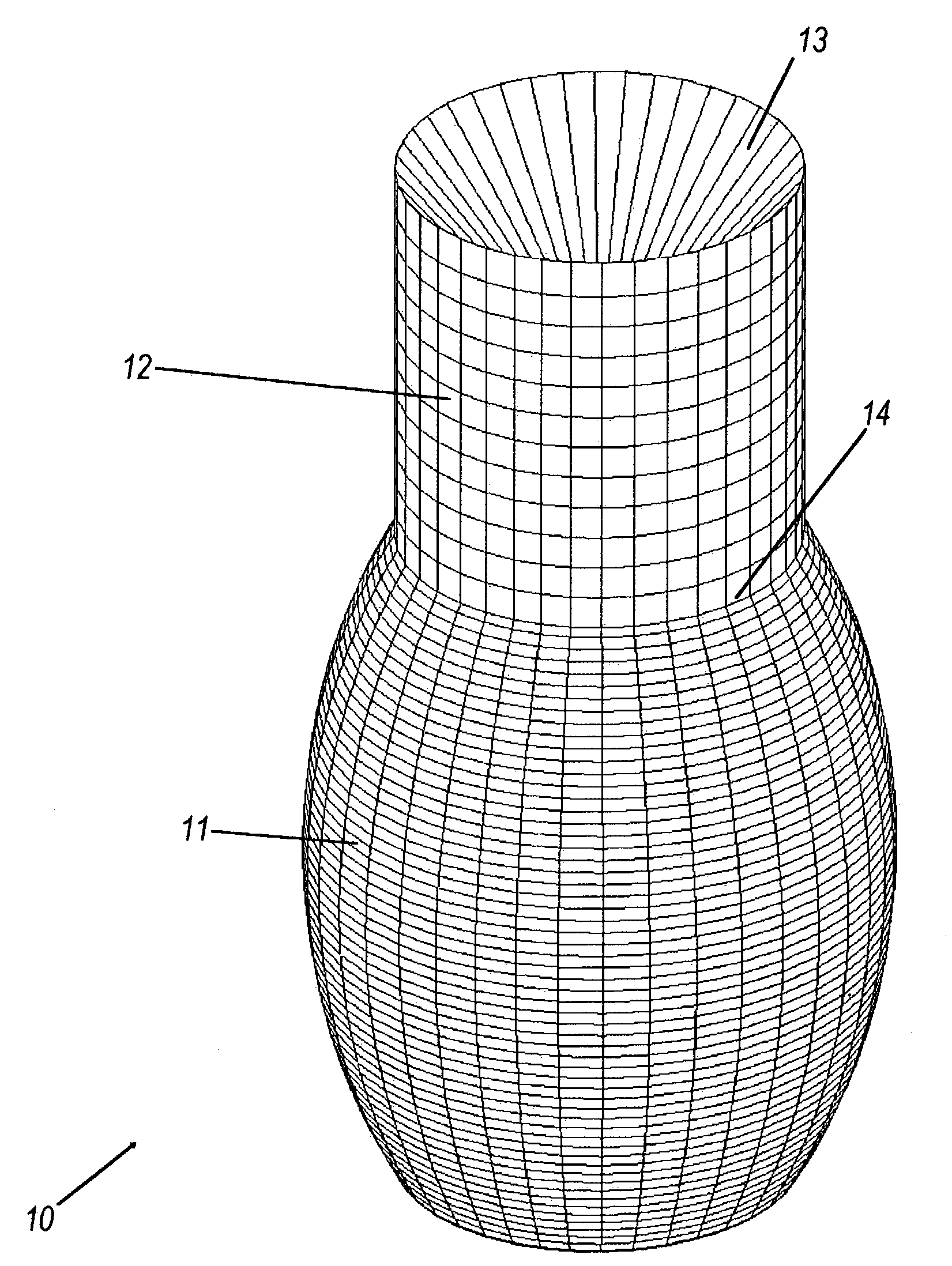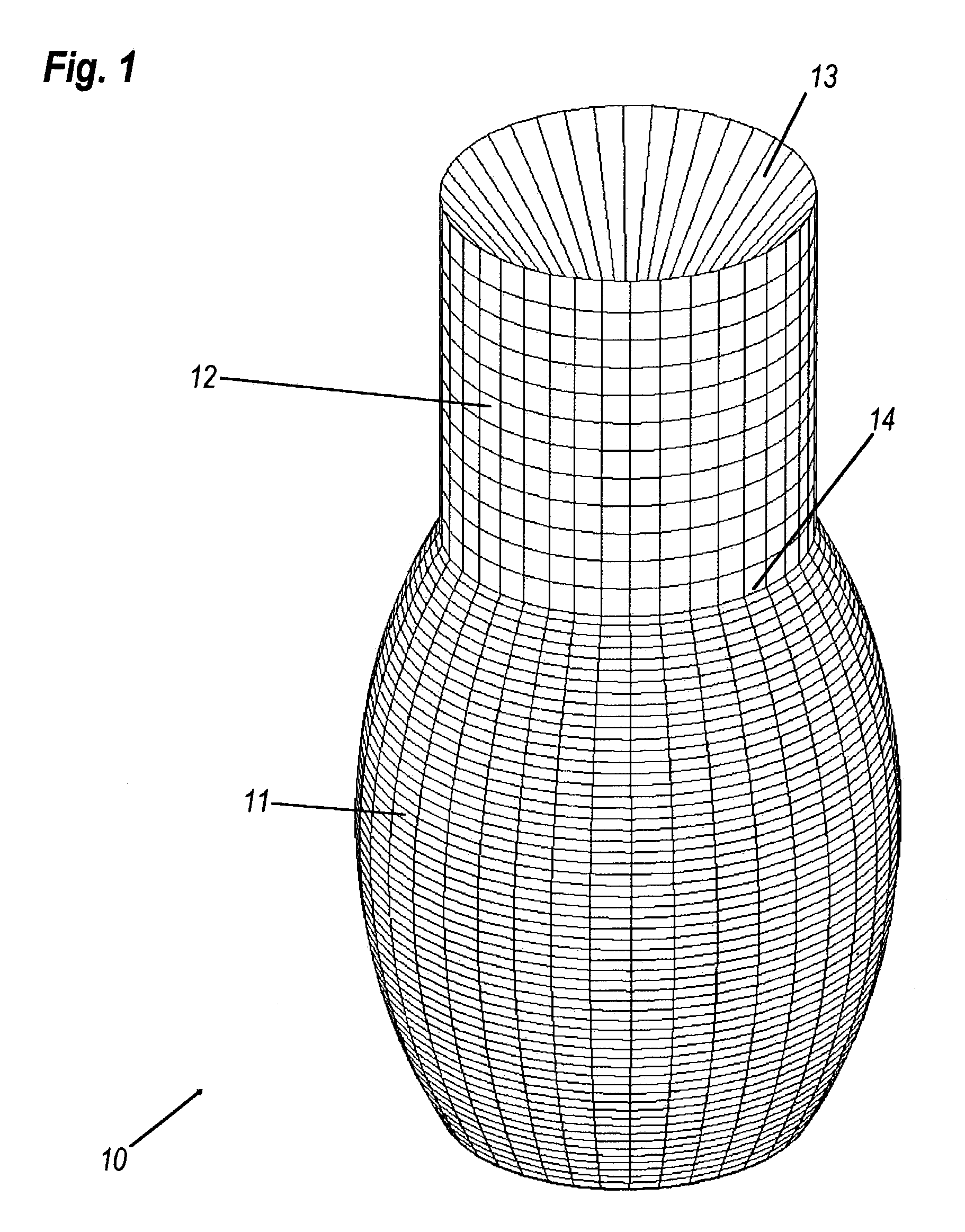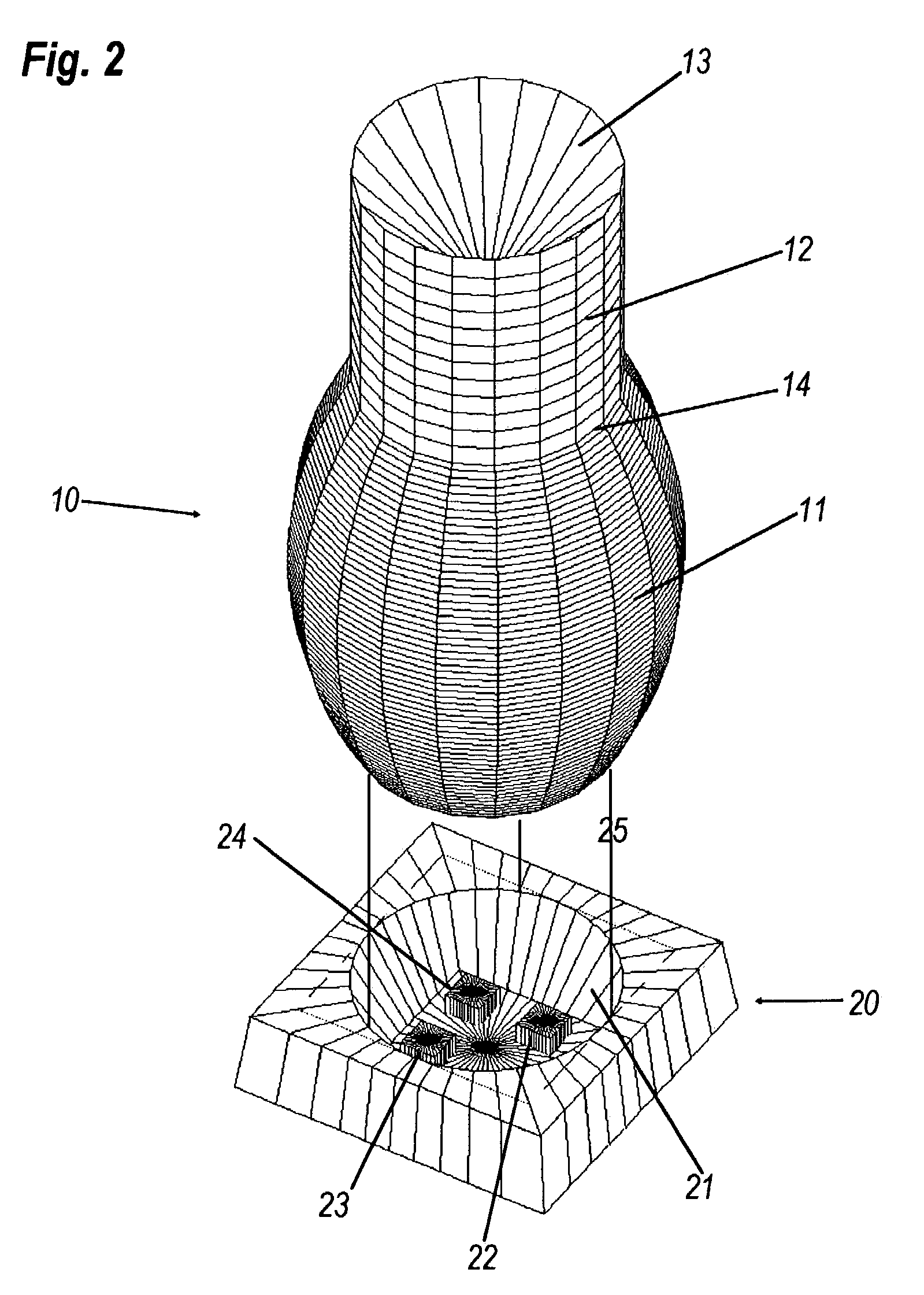Optical device for repositioning and redistributing an LED's light
a technology of optical devices and leds, applied in semiconductor devices, instruments, lighting and heating apparatus, etc., can solve the problems of led lamps that led lamps are unsuitable for electrically unsuitable, and led lamps are not suitable for direct installation into conventional flashlights
- Summary
- Abstract
- Description
- Claims
- Application Information
AI Technical Summary
Problems solved by technology
Method used
Image
Examples
Embodiment Construction
[0051]The following description of the presently contemplated best mode of practicing the invention is not to be taken in a limiting sense, but is made merely for the purpose of describing the general principles of the invention. The scope of the invention should be determined with reference to the claims.
[0052]Referring to FIG. 1, shown is top perspective view of an optical device according to an embodiment of the present invention. Lens 10 comprises lower transfer section 11 and upper ejector section 12.
[0053]The lens 10 is a transparent solid in the general shape of a prolate ellipsoid and is single piece of a transparent material such as acrylic or polycarbonate. It has a rotationally symmetric shape, taller than its diameter. Upper ejector section 12 is cylindrical, with a conical indentation 13 on top of it. Exit plane 14 is the boundary between transfer section 11 and ejector section 12.
[0054]The lower transfer section 11 uses internal reflection to relocate an LED's emission...
PUM
 Login to View More
Login to View More Abstract
Description
Claims
Application Information
 Login to View More
Login to View More - R&D
- Intellectual Property
- Life Sciences
- Materials
- Tech Scout
- Unparalleled Data Quality
- Higher Quality Content
- 60% Fewer Hallucinations
Browse by: Latest US Patents, China's latest patents, Technical Efficacy Thesaurus, Application Domain, Technology Topic, Popular Technical Reports.
© 2025 PatSnap. All rights reserved.Legal|Privacy policy|Modern Slavery Act Transparency Statement|Sitemap|About US| Contact US: help@patsnap.com



